12 Best Second Brain Apps in 2025
Best Second Brain Apps
10th Dec, 2024
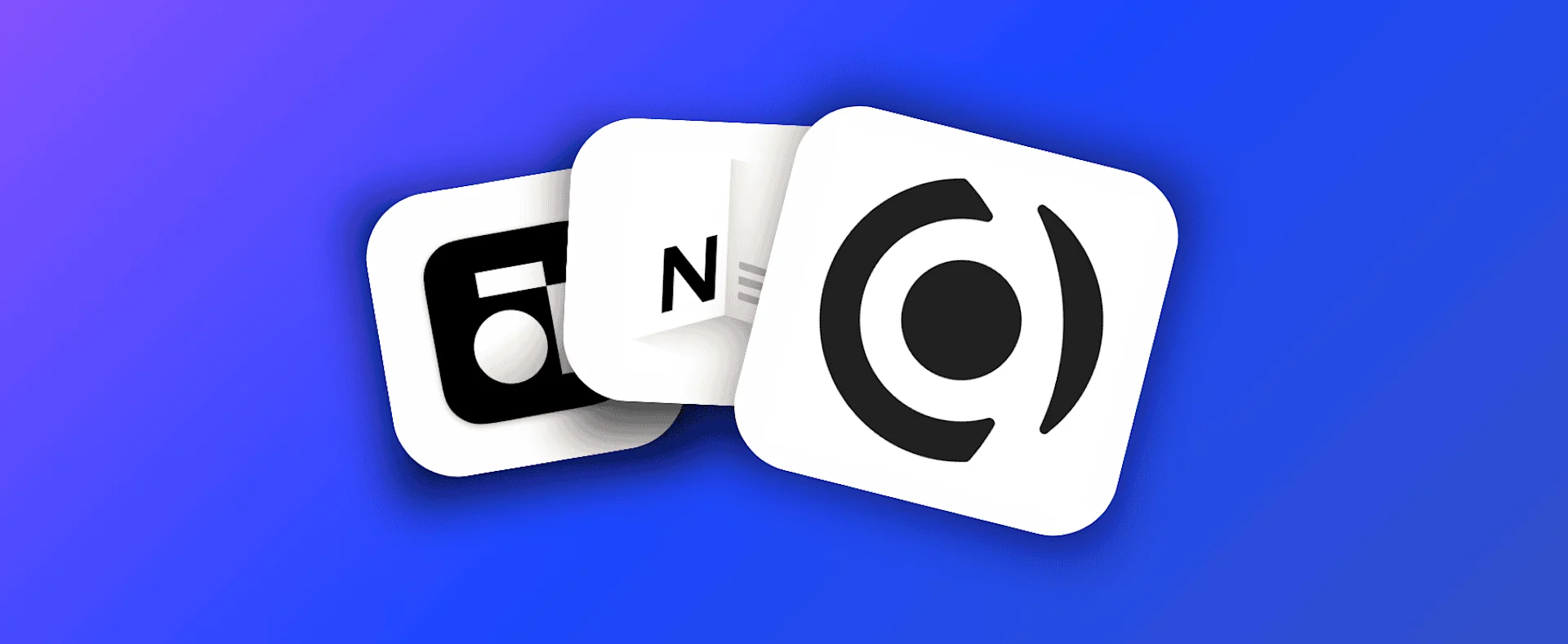
A list of the best second brain apps for note taking, including tools like Notion and Evernote. Find the best second brain note taking app and pair it up to your way of note-taking and the powerful Second Brain ideology.
Have you ever felt overwhelmed when remembering everything?
Millions do every single day.
The Second Brain concept, by Tiago Forte, has been adopted by millions worldwide. Becoming a global system for those wanting to take better notes & store their memories digitally, Tiago Forte has created a cult-like tribe of people who want to focus less on remembering things and more on doing things.
This system has helped many people embrace their ideas, memories, and work-based notes for better capture, organization, and reflection when the time comes. Inspired by GTD, Getting Things Done, the system is a foolproof way of organizing notes, learning, and sharing them with the world.
What is the Second Brain concept?
Very simply, the Second Brain is a process of note-taking that helps you remember & express things; it follows a system called CODE that signals the steps you need to go through with your notes:
What does CODE stand for?
- C stands for Capture - This is bringing your notes into your system.
- O stands for Organize - This is where the notes are for reference later and stored.
- D stands for Distill - Allowing you to reflect on and comprehend your notes.
- E stands for Express - The final stage for extracting the learning from the notes taken.
What makes a good Second Brain app?
Second Brain apps come in many shapes and sizes, some with AI note-taking abilities, others with a focus on bringing tasks, calendars, and notes into one location; here are some of the reasons we've picked them:
- Well-known options: These second-brain apps are established globally with active users.
- Reliable backgrounds: Developed by credible developers, all featured on our site.
- Tiago Forte approved: Some of these tools have been recommended by Tiago Forte.
10 Best Second Brain Apps
Here's some of the best Second Brain tools and apps:
1. Notion
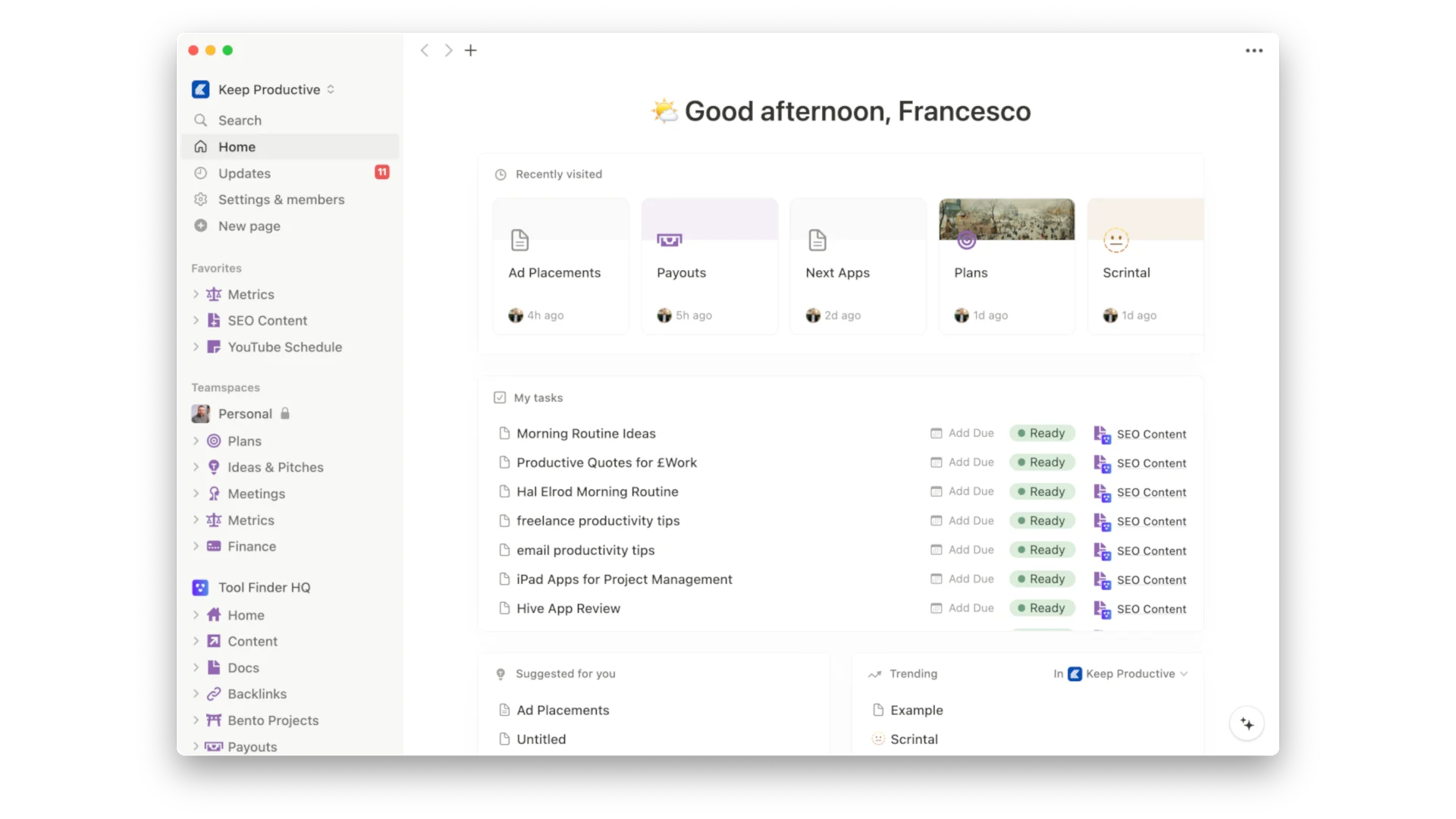
Notion is among the most popular second-brain software tools available, mainly due to its flexibility and alignment with Tiago Forte's concepts. Notion includes a web clipper, allowing you to collect information from the web.
It can also integrate with services like Readwise, helping you gather content from books, articles, conversations, and more. Notion even uses AI, letting you access helpful web resources directly within the platform. These capture tools are available on various devices, making them highly versatile. This is still growing in use cases, but it can be helpful. Once you’ve gathered your information, Notion provides extensive ways to organize and structure it into projects, categories, or areas. Its flexibility in setting up your account means you can implement methods like PARA (Projects, Areas, Resources, Archives) for efficient storage and organization.
If setting up such systems feels challenging, templates are available from Notion and third-party developers. Templates like the Easlo template can help you start quickly and organize information, as Tiago recommends. Notion’s AI features now assist with distilling and summarizing your knowledge. You can use the Notion Q&A tool to extract insights from your notes or highlight key takeaways using in-page AI—something that is difficult for many other productivity apps to replicate.
Expressing your knowledge in Notion is also highly customizable. It supports collaboration and sharing, and with the new Notion Sites feature, you can turn your pages into websites that can be updated and shared in real-time. This is particularly useful for those interested in creating "digital gardens," where you can continue to develop and refine your ideas without leaving Notion. If you have a Pro account, you can even connect it to a custom domain.
Pros:
- A flexible workspace for a range of media
- Optional views for managing databases
- Free and unlimited blocks
- Always adding new features
Cons:
- It can be difficult to learn
- Does take time to set-up and organize
Pricing:
Notion is free with unlimited blocks and has premium pricing starting at $8 per month, billed yearly.
2. Evernote
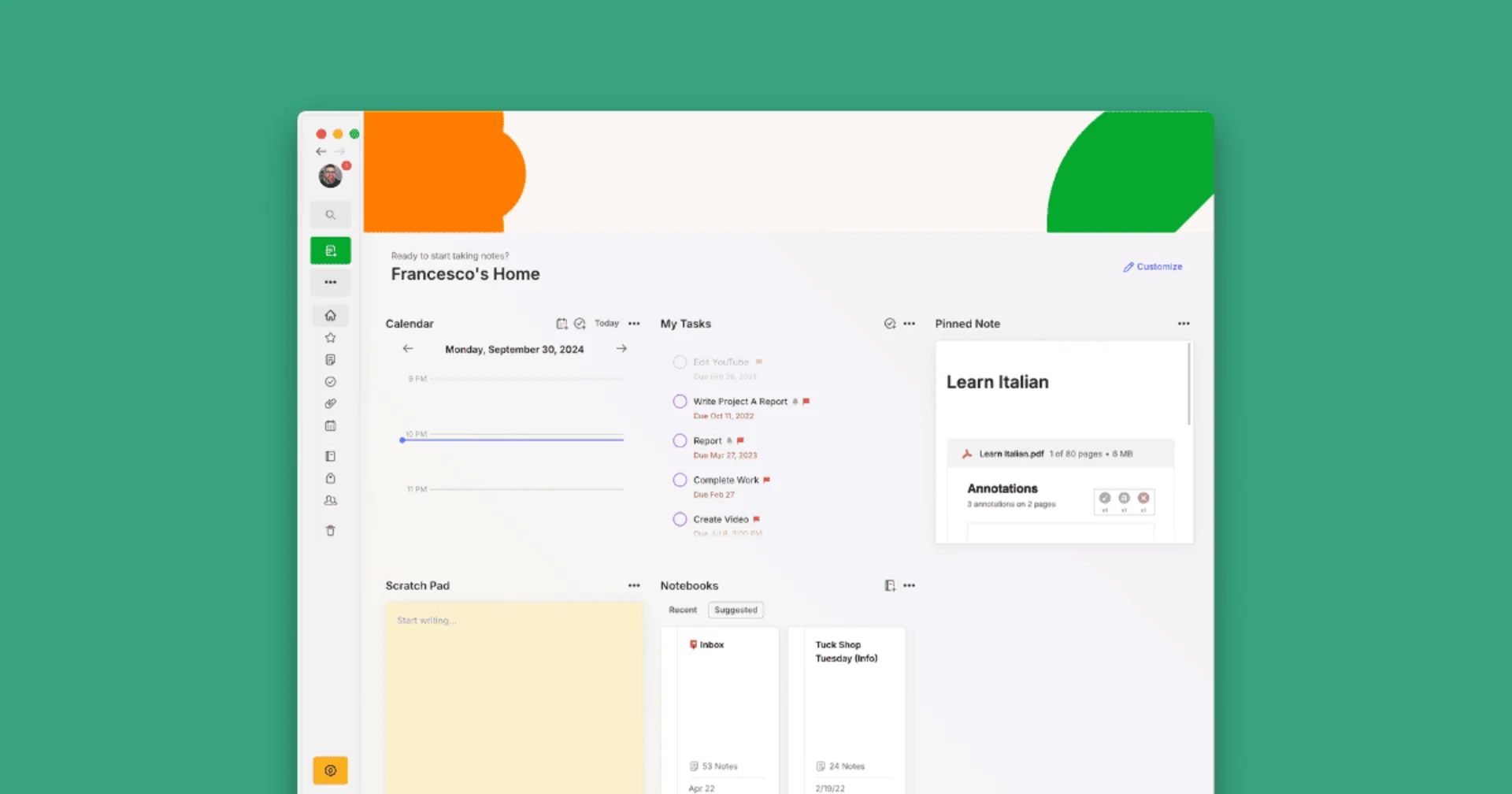
Evernote is one of the most traditional second-brain applications on the market. It has a long and rich history of being out there as one of the digital brain options. There is also a whole host of systems that can help you organize and structure, as Tiago Forte recommends. Evernote is well known for its web clipper, which allows you to capture PDFs, web pages, and much more. But most importantly, it lets you annotate in real-time, giving you some important insight before you add it to your system.
This is a fan favorite for many people, and one reason why many people have not moved from the application is the Chrome extension, as well as the other abilities for clipping on mobile, which allow you to quickly bring stuff into your system. The benefit is that it has its own built-in document scanner experience, which allows you to import items into your system quickly.
Pros:
- Bring all your tasks, notes & calendar in one
- Comes on iOS, Android & all desktop
- Comes with famous Web Clipper on the browser
- Bending Spoons has been actively developing
Cons:
- Much pricier than before
Pricing:
Evernote is $14.99 per month with a limited free pricing.
3. Obsidian
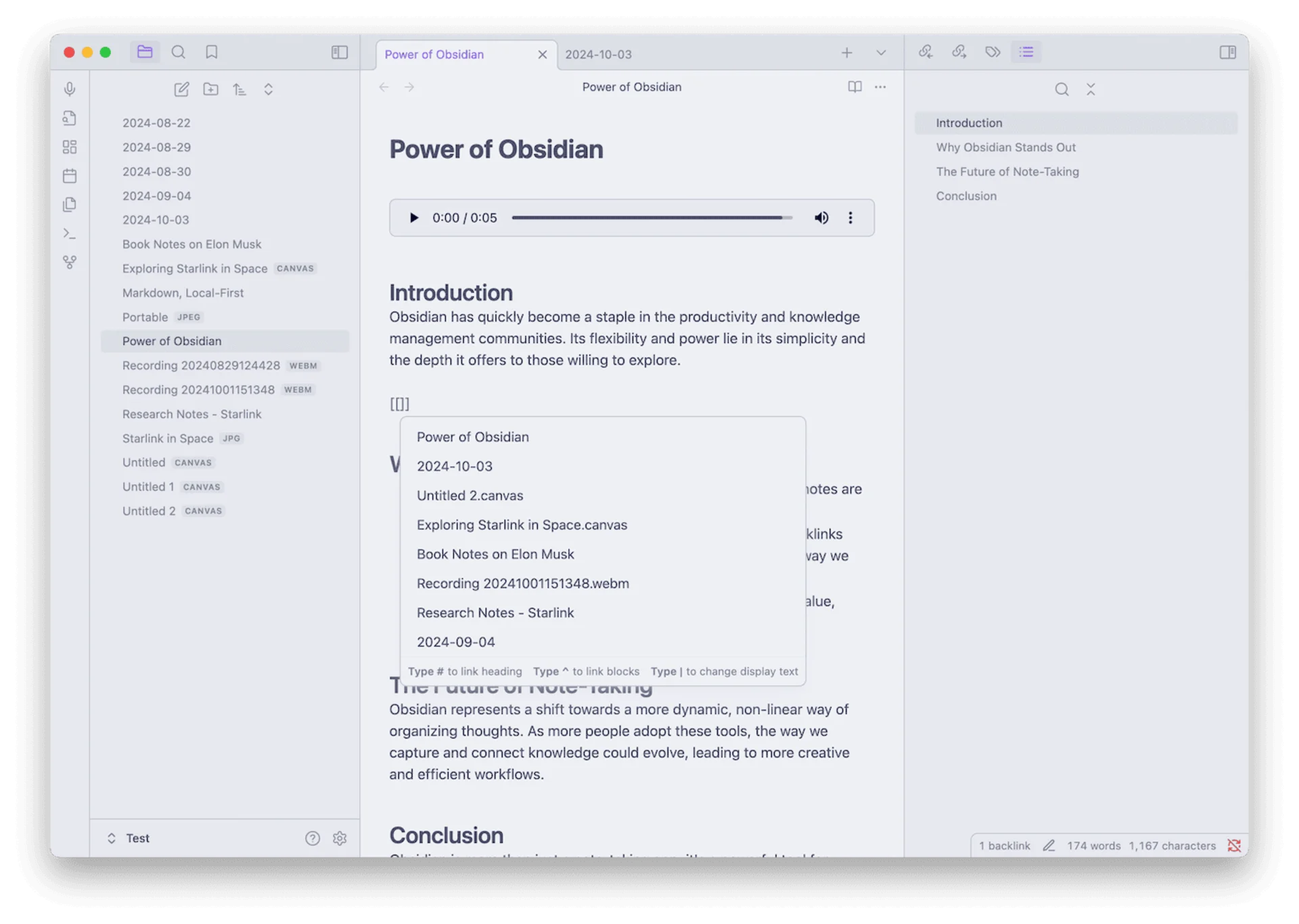
Obsidian describes itself as a private and flexible writing app. For many, Obsidian is the best PKM-focused second brain app, combining the power of networked thought with the traditional note-taking feel. These are commonly referred to as PKM tools, and we've listed many of them because they make nice second brain apps.
Obsidian balances Evernote and Notion in terms of complexity, but for many Second Brain adopters, using Obsidian's features like graph view (for viewing how notes connect), backlinks (for connecting notes together), and canvas (below) is a welcomed set of advanced note-taking features for going deeper with ideas.
Pros:
- Comes with PKM abilities
- Powerful graph view for networked notes
- Obsidian adds new features fairly regularly
- You can switch on and off features
- Free & easy access
Cons:
- Lacks project management
- Does not have database abilities
Pricing:
Obsidian is free to use with no limits; there is a $4 per month pricing for E2E notes & sync.
4. Reflect Notes
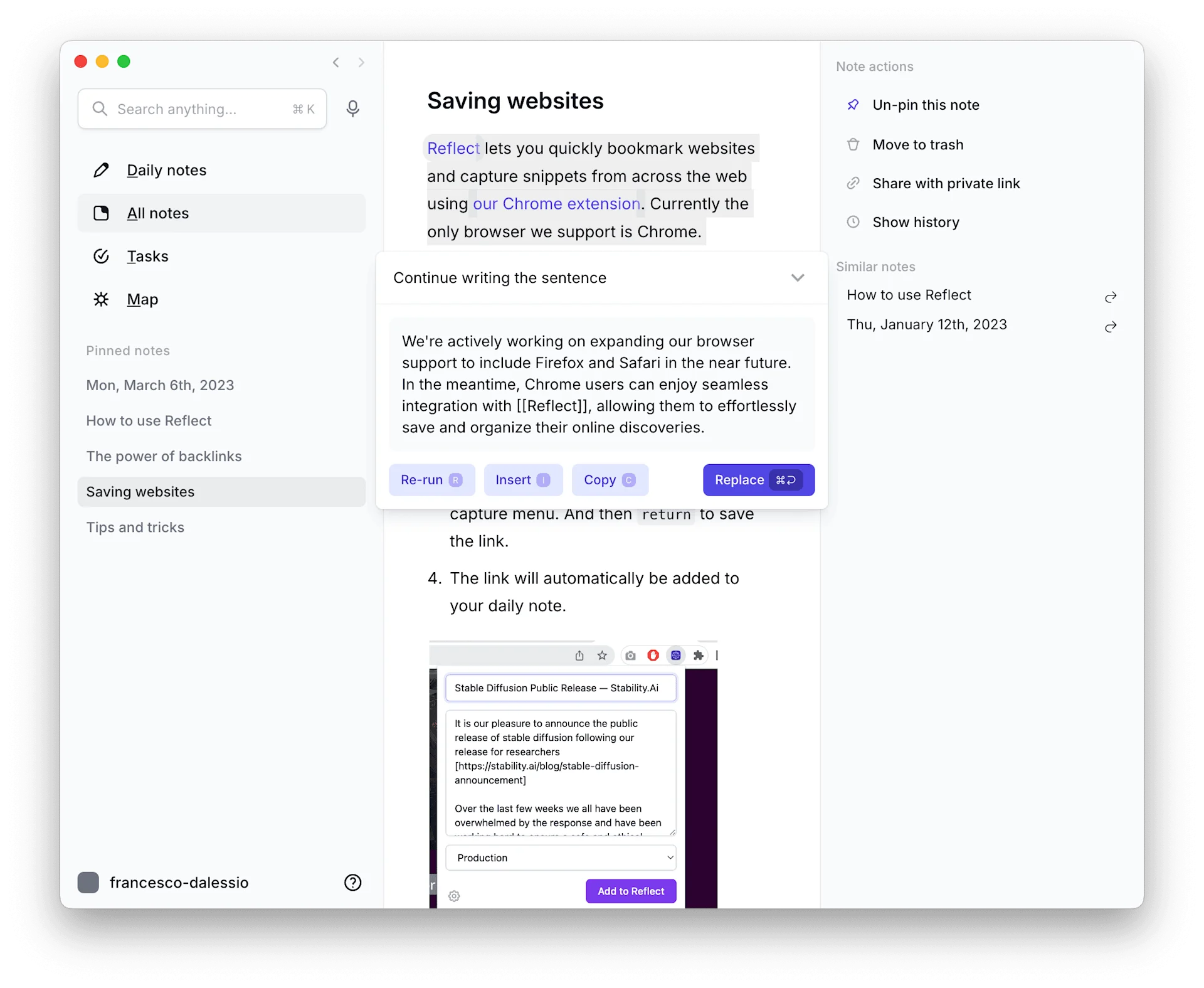
Reflect Notes is a good second brain app, it resembles a PKM software but with a friendly feel. Whilst this application charges $10 per month (annual), it presents a solid release cycle, new features to expand the line-up, like tasks and a Google Calendar connection. Many people also like how Reflect can be connected to Amazon Kindles so that you can better save notes and easily bring them into your second brain system.
Reflect is reserved for iOS and macOS users, but it has a neat Chrome and Safari clipper for better saving. One element of Reflect that goes unnoticed is the focus on privacy and security, with encrypted notes being one of their key priorities.
Pros:
- Balanced design between PKM & note-taking app
- Always adding new features and AI abilities
- Designed for busy professionals
- A much better focus on security
Cons:
- Much pricier option
- Can be overwhelming for more basic note-takers
Pricing:
Reflect Notes is $10 per month, billed annually. No free plan.
5. Logseq
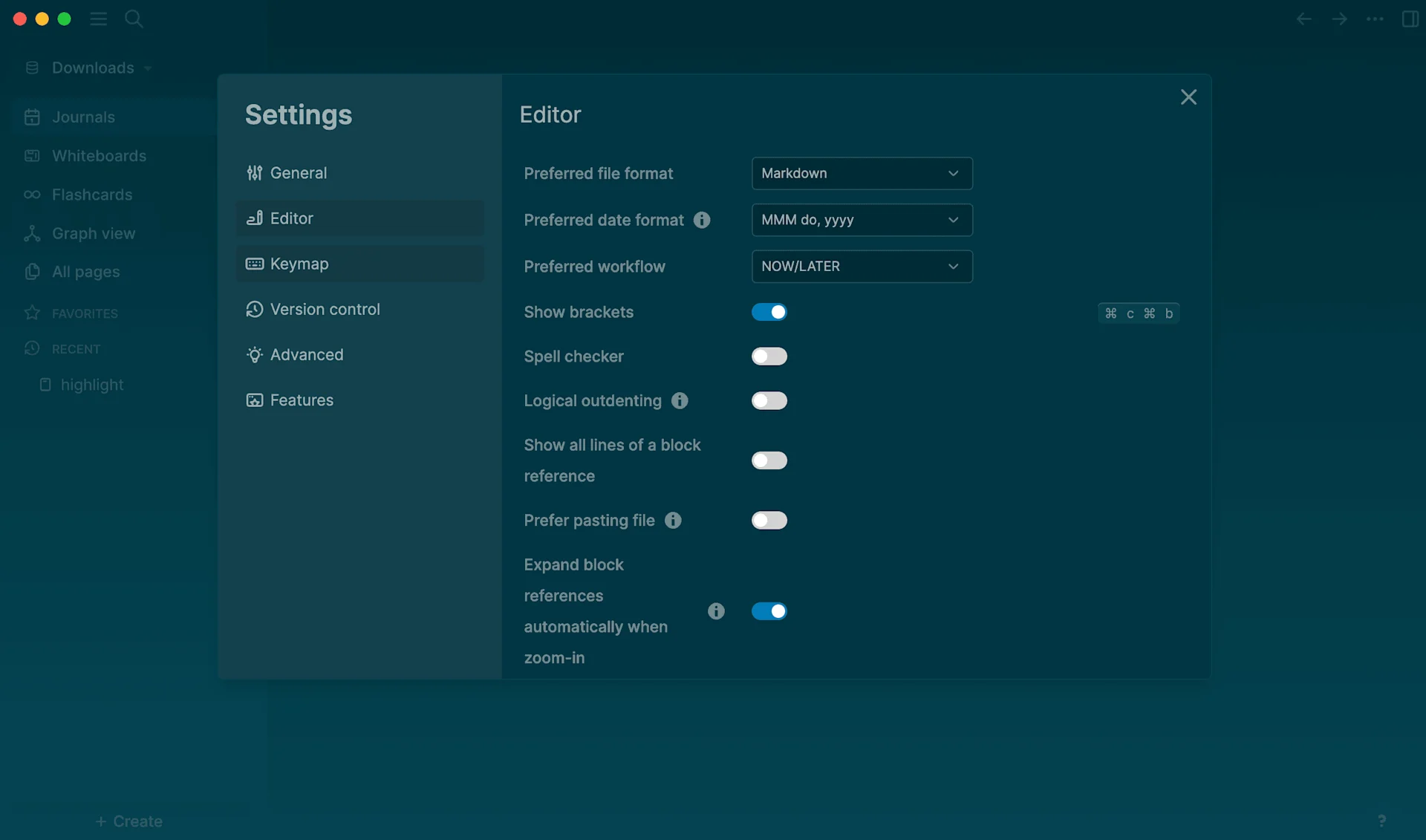
Logseq is very much like Obsidian. It comes with an advanced note-taking focus that many people like for research or in-depth team or personal knowledge bases. Logseq has got a bunch of abilities that do extend the nature of the tool like flashcards and whiteboards both allowing you to bring to life existing notes and craft them more suitably for your Second Brain.
Imagine using the flashcard functionality to resurface notes that you want to remember, not only for an exam but also for future recall. This feature could be very helpful. One of the other tempting elements is that privacy is a key focus on Logseq. You can also store your information and notes offline, locally—better for those sensitive to their Second Brain being in the hands of others.
Pros:
- Powerful PKM application
- Comes with whiteboards for visual thinkers
- Perfect for students making flashcards
- Well-built too that works offline
Cons:
- Can be difficult to learn and implement
Pricing:
Logseq is free to use with no announced pricing.
6. Milanote
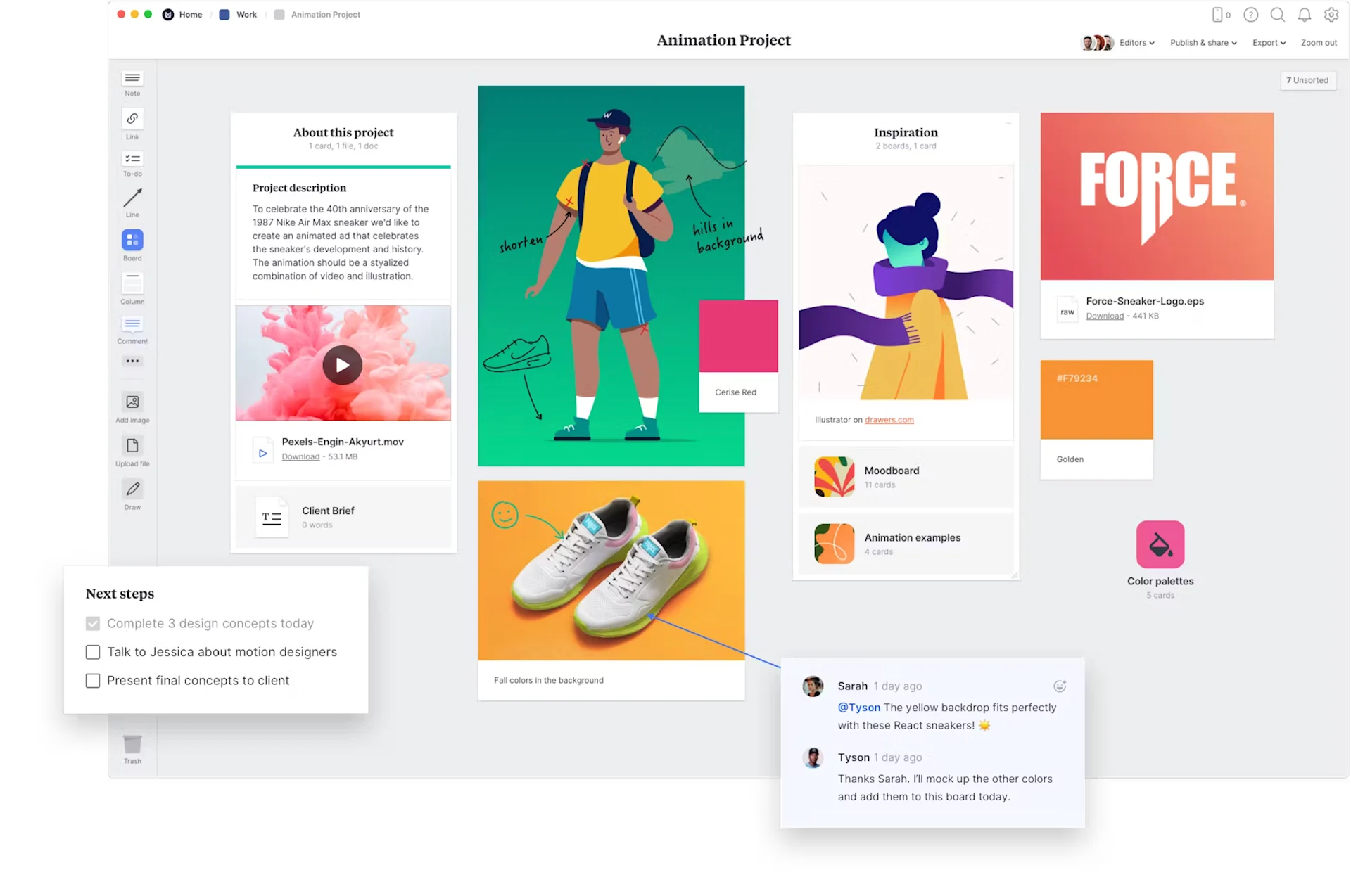
Milanote is great for visual thinkers and learners, providing a good choice of second-brain app for anyone who would rather save more visual notes and ideas than just linked notes between each other. This is going to take some getting used to, as notes don't sit like they do inside the canvas and are perfectly searchable like other apps in this list. Milanote is much better if you like to plan notes and projects at the same time.
Best Features for Second Brain Use
- Milanote provides a flexible and visual workspace with customizable fun boards.
- Use templates to get started quickly with building your second brain app.
- Collaborate on notes to work alongside team members on projects and ideas.
- Integrate with Dropbox, Google and more to quickly save images, documents & more.
Pros:
- Canvas-style layout popular with visual thinkers
- Project management abilities for creatives
- Perfect for designers and small teams
Cons:
- Might be too unstructured for some
Pricing:
Milanote is a free plan with premium pricing of $9.99 per user, per month.
7. Mem Notes
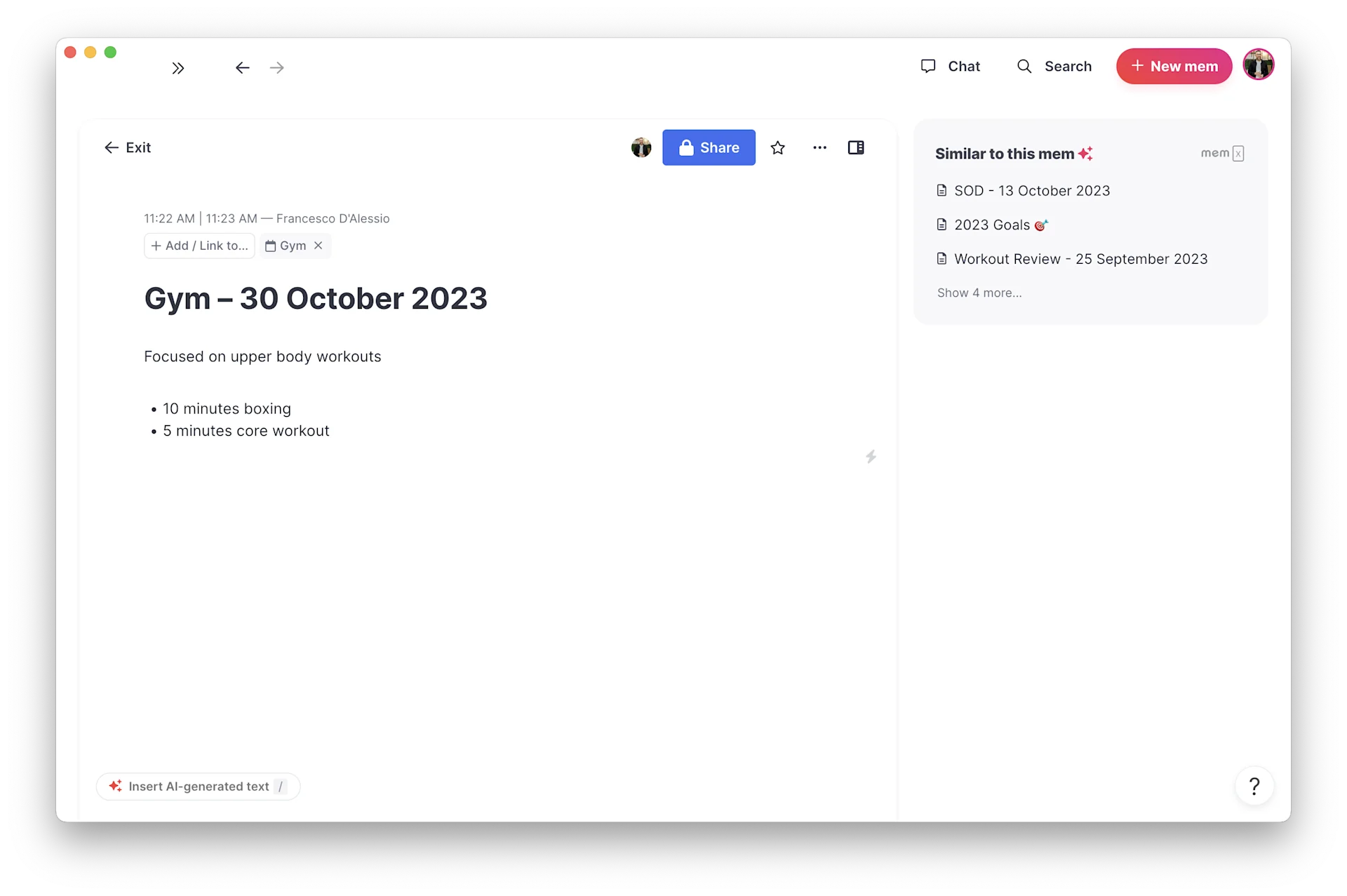
Mem is a strange note-taking application that focuses more on your connection with notes and AI technologies. It uses your notes and brings them into a chat-like experience to help you communicate with your notes and AI for better output.
For example, you can add many notes about your day-to-day business operations and then ask your notes questions like "what do you think the biggest issue is with how I do things" and it will help compile a recommended answer based on all your notes taken.
Best Features for Second Brain
- Build your own templates for notes inside Mem and create a workspace to save and organise all notes inside your second brain.
- Use AI abilities inside Mem to identify important information and save notes accordingly.
- Use tags so you can quickly search and find notes you are thinking about or want to expand on.
- Share and collaborate on notes especially if working on a project.
Pros:
- Designed for busy professionals
- Comes with a document-like experience
- Good for AI-based note-taking
Cons:
- Can be difficult to learn at the start
- Many people can do these abilities with free PKM apps
Pricing:
Mem Notes is a free tool with limitations. Pricing begins from $15 per month.
8. Capacities
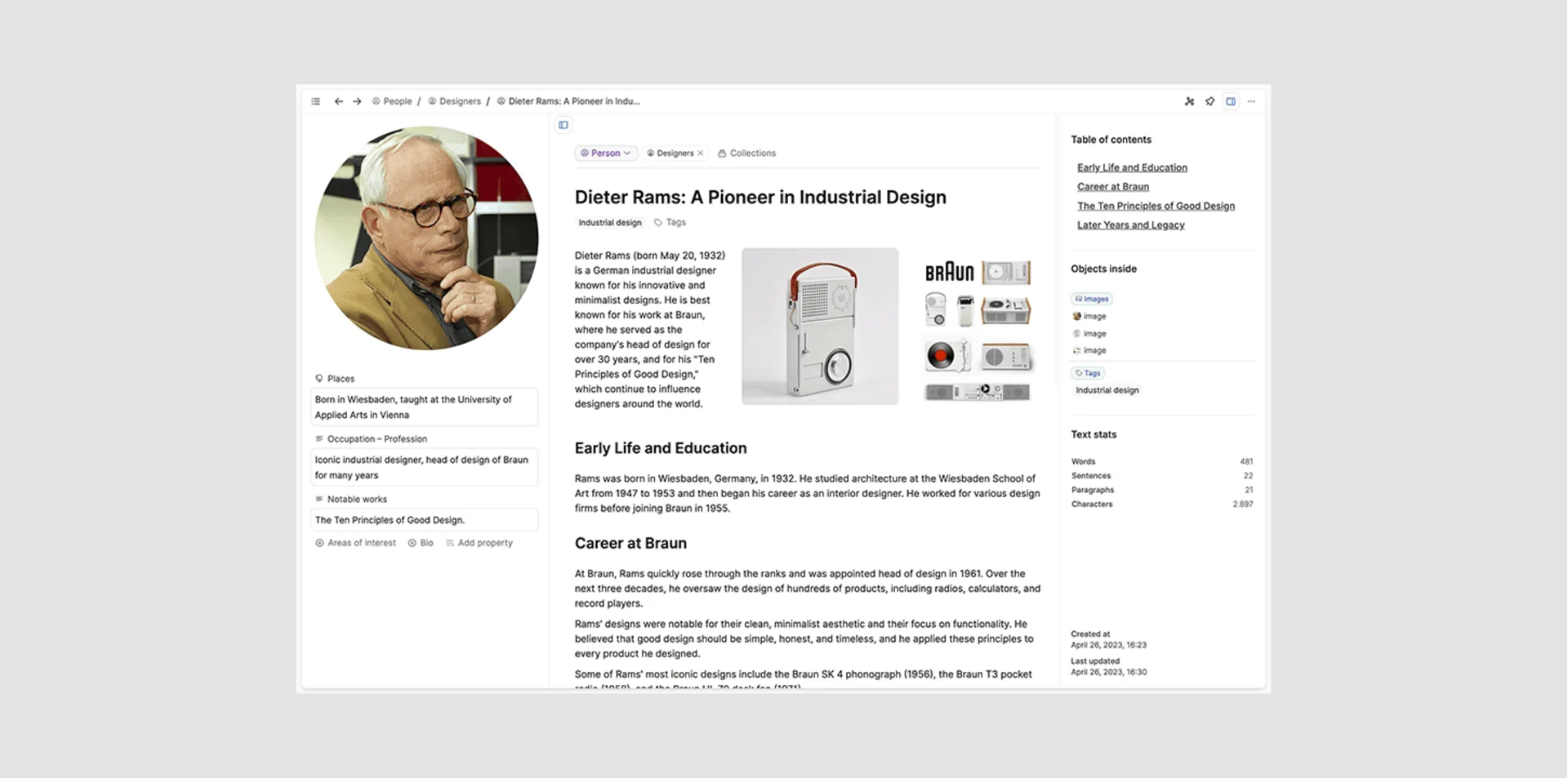
Capacities wants to be the studio for your mind by offering a unique way to take notes with objects in mind. Objects help structure a note from the core by offering repeatable note templates that save time and effort. Think "book" capture for learnings from books, this might save you time knowing you are adding a book as an object and building from that. This is much more approachable for people who want to get into PKM apps but don't know how to get started. Capacities bridges the gap between complex and simplistic.
Capacities is much like Notion but with a twist, the focus on objects within your notes can be very helpful for creating structure, building relationships and adding notes fast. The first few weeks of setting up your Second Brain in Capacities might be intense, but the payoff will be much greater than many of the other apps in this list - as the system is set up for your types of notes that live as objects.
Pros:
- Beautiful Notion-like design
- It comes with a calendar mode for daily notes
- Works well offline with near offline functionality
- Comes with AI features for chatting with notes
- Easy to use once you get started
Cons:
- Lacks powerful databases
- It can be complicated for the average note-taker
Pricing:
Capacities are free to use, with a $9.99 per-month upgrade needed to access premium abilities.
9. Workflowy
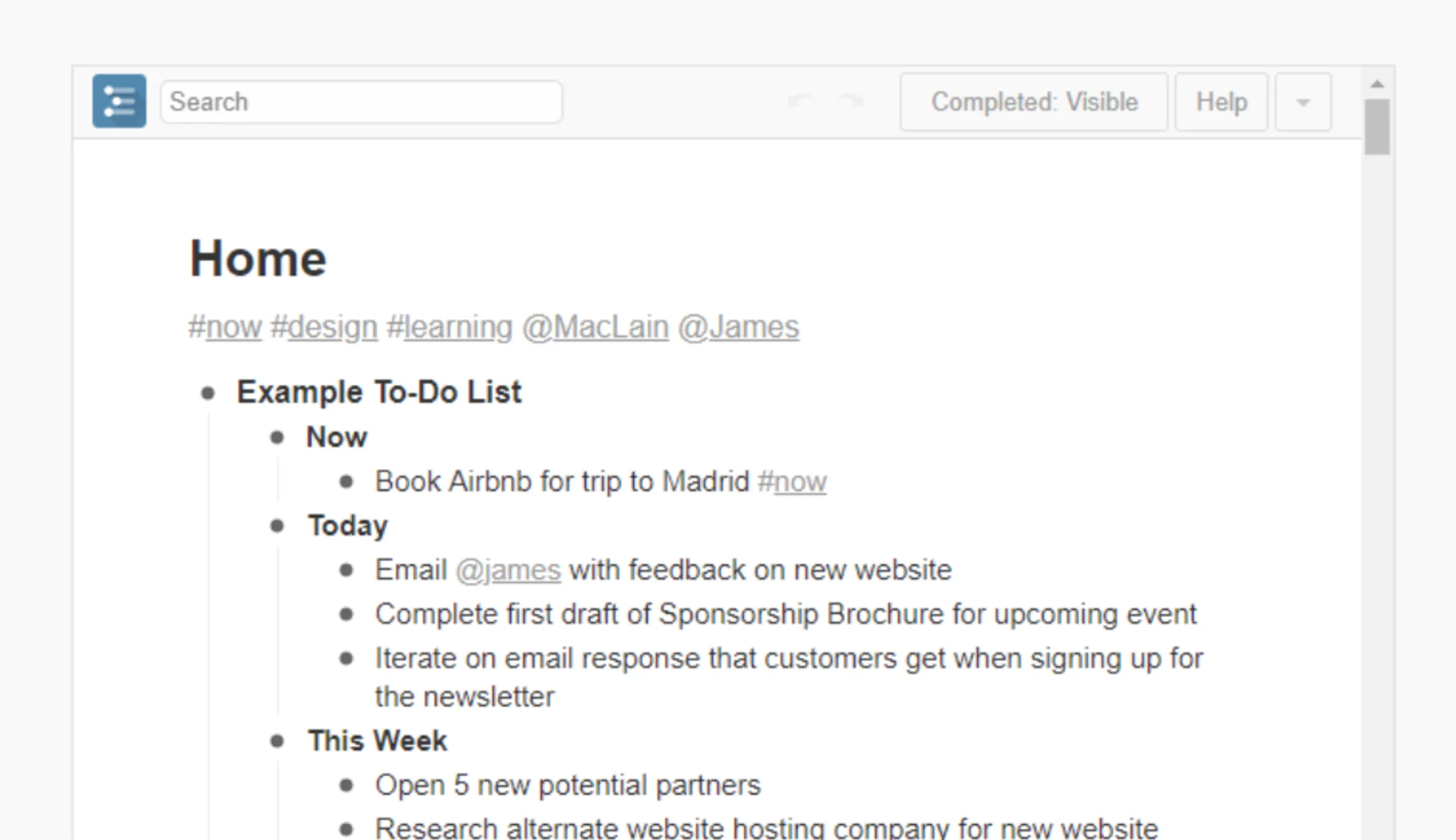
Workflowy wants you to organize your brain by using an outliner concept. Unlike the second brain app on this list, Workflowy uses outliner notes, which are text-based notes that expand as you click into them. This concept has evolved into full-fledged notes apps, but people still use and love simple and nested notes designed to be more organized.
Workflowy has Kanban boards, tags, and live copy features, which all help you expand notes and use this outliner to bring and capture your best ideas, thoughts, and notes into a tidier system than your first glance. It's worth looking at for more simple second-brain use.
Pros:
- Great for people who like outliners
- Perfect for less media focused individuals
Cons:
- Harder to learn and implement
Pricing:
Workflowy is a free app with a premium pricing.
10. Heptabase
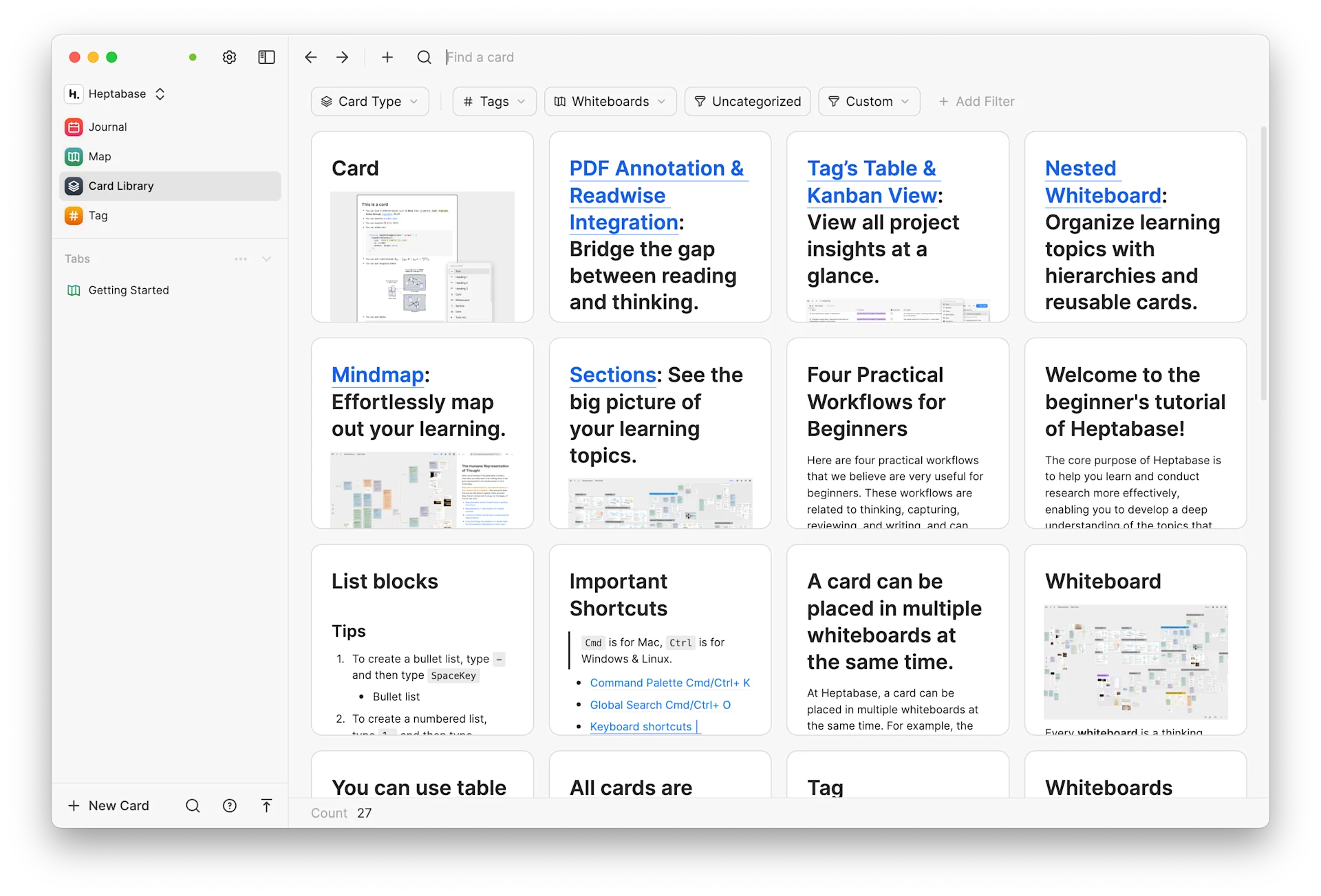
Many people turn to note app that allow for better research and data collection and Heptabase is one of those for your notes. The visual canvas allows you to connect the notes you're working on but largely the notes allow for better research collation and curation. Many visual thinkers and researchers find that this is one of the best second-brain apps for that combination.
If you're torn between Milanote and this, you're thinking visual note-taking as a concept to use. For Heptabase, it works very well with those who are researching and for many that is a popular use case for the Second Brain concept. We'd recommend exploring our list of the best visual note-taking apps to go deeper as many of them too, map to the Second Brain concept.
Pros:
- Good abilities for visual thinkers
- The desktop and mobile app work well
- Works well for connecting notes
Cons:
- Can be overwhelming
- Not suitable for everyone
Pricing:
Heptabase is priced at $11.99 per month, with cheaper annual pricing. There is no free plan.
11. Amplenote
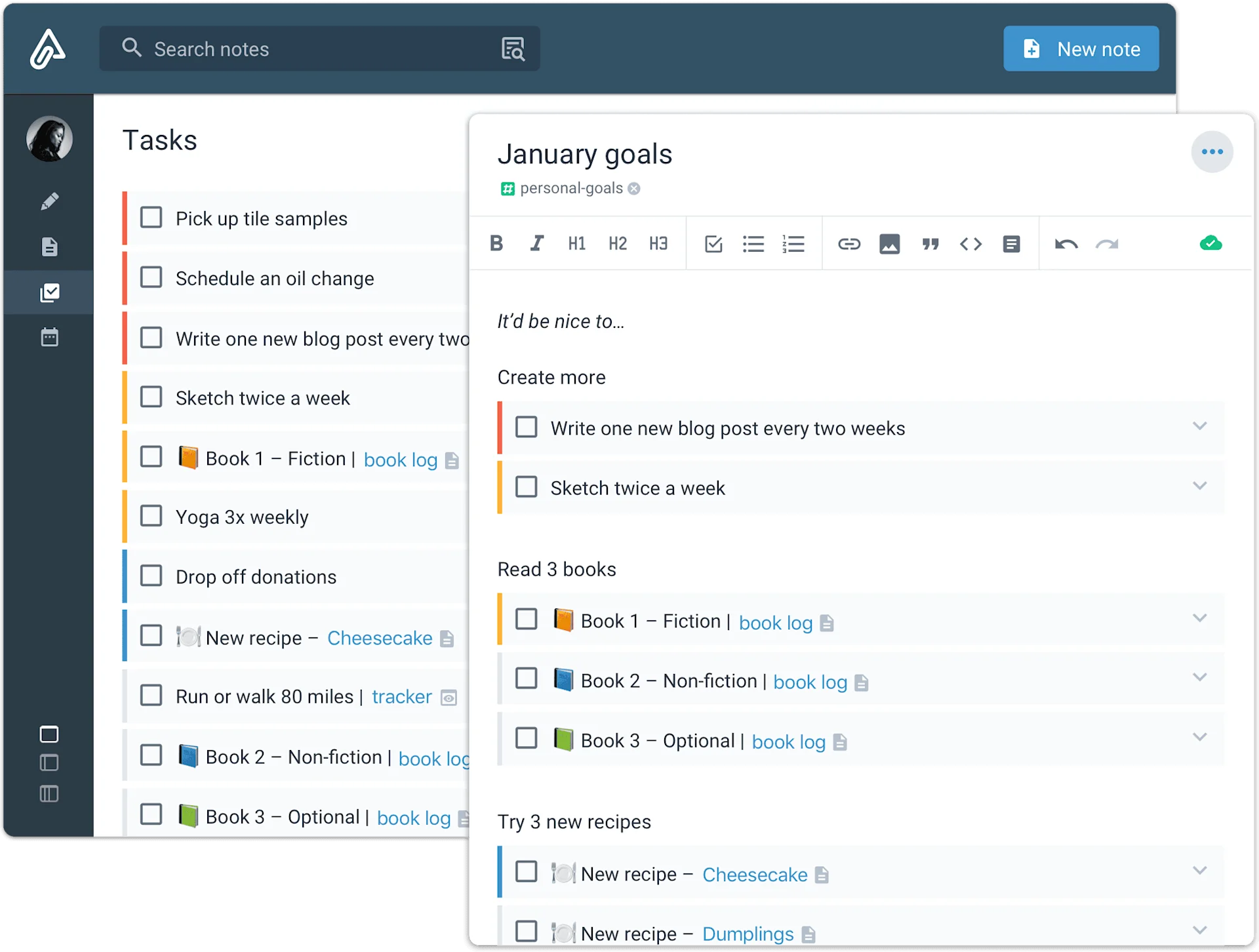
Amplenote is a GTD dream. People love Amplenote's combination of notes, tasks, and calendar management. The note-taking abilities are really good, despite the design not being as "sexy" as apps like Notion or Obsidian.
The software works well to balance those three parts of your productivity and house them in one. The ability to backlink, connect tasks, and capture allows for a super second-brain layout. For housing everything, Amplenote is a great tool that works like Evernote but with more superpowers packed in. For those who have used Evernote and want an alternative to it, Amplenote is one of the best ones - and it presents a good house for your Second Brain with the intense stuff like linking notes & bonuses like task management too.
Pros:
- Combines tasks, notes & calendar
- It comes with a daily note feature called Jots
- Designed for individuals looking for an Evernote replacement
- It has many GTD-like features for managing the workload
- The task score feature is brilliant for prioritizing tasks
Cons:
- Can be too intense to learn fro some people
- The design isn't as attractive
12. NotePlan
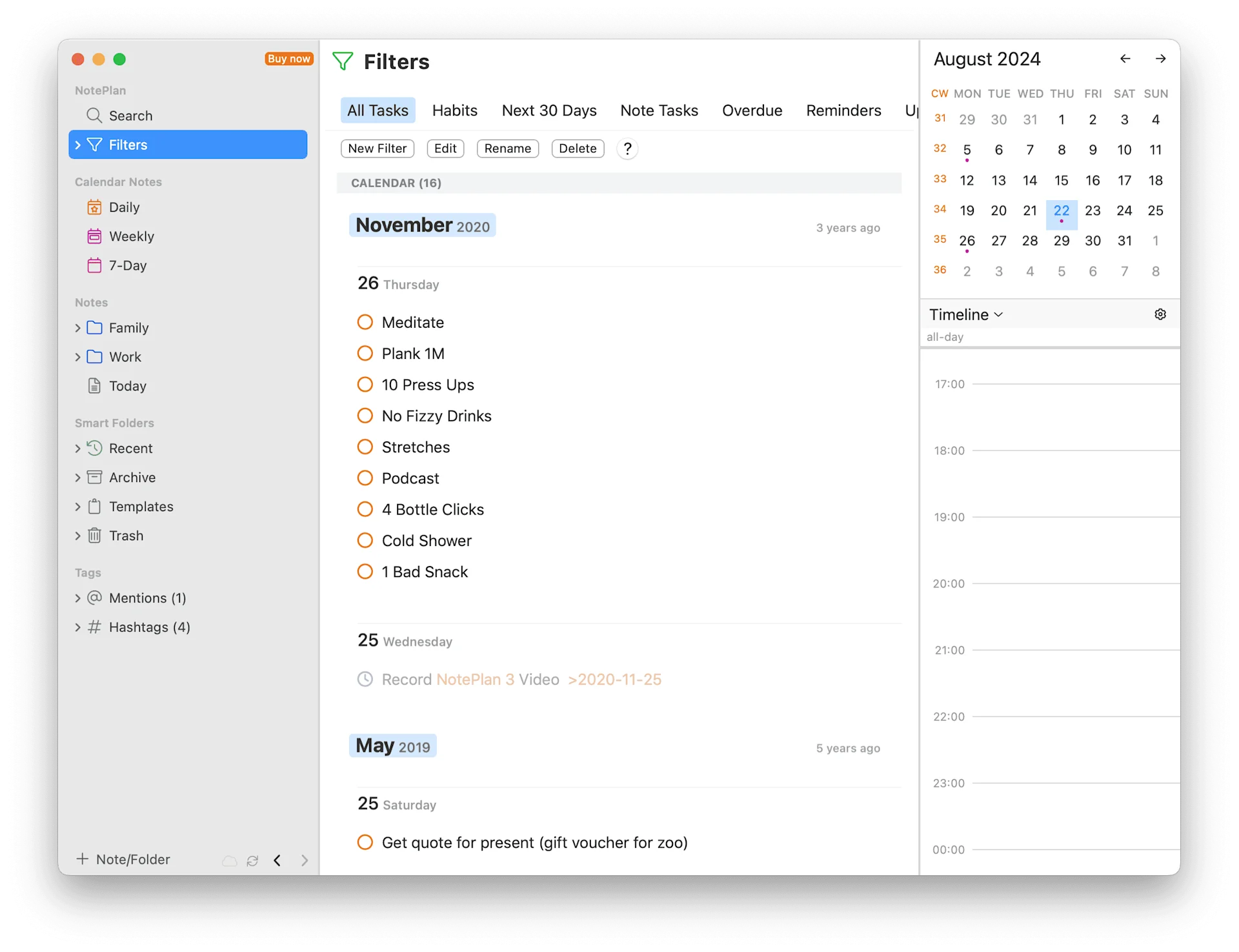
NotePlan is a note-taking tool popular with those who like date-based tasks and notes. It lends itself to the second brain concept for better planning your week ahead and all the notes accompanying it. It is similar to Evernote, with a core productivity system for notes, tasks, and calendars. It allows you to capture on the mobile app (iOS) and is great for organizing, too, with a bullet journal feel.
Pros
- Combines tasks, notes & calendars in one
- Fast and robust app for Apple-focused devices
- Perfect for those with date-based notes
- Works well with templates
- Popular for bullet journal lovers
Cons
- Pricier yearly option with no free
Pricing:
- NotePlan charges $99.99 per year with no free plan.
Oops, undefined is still in development...
Weekly Roundup: Explore People's Productivity Tools
Become a reader to our newsletter exploring what productivity apps people use on a daily basis to get things done